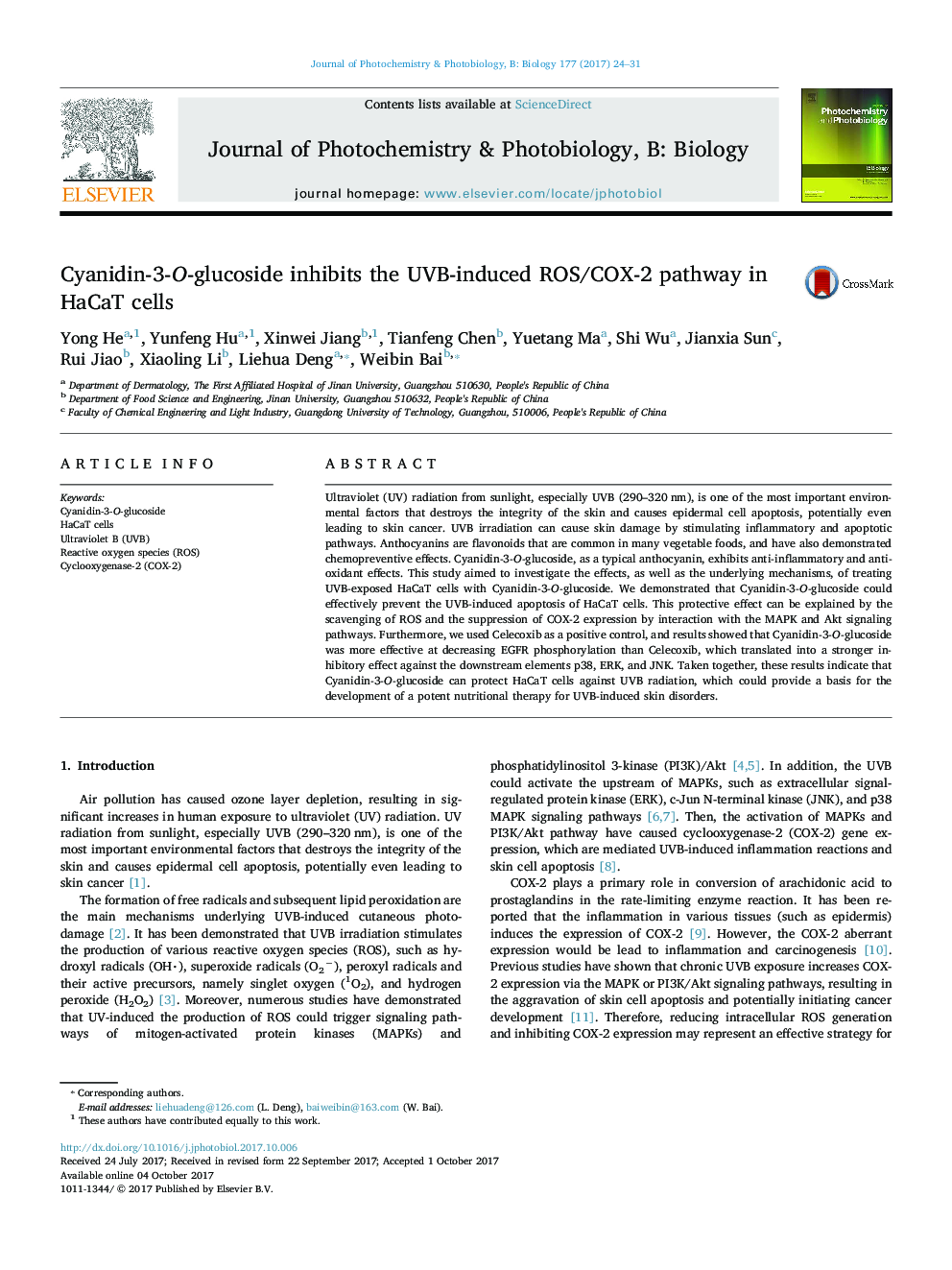| Article ID | Journal | Published Year | Pages | File Type |
|---|---|---|---|---|
| 4754264 | Journal of Photochemistry and Photobiology B: Biology | 2017 | 8 Pages |
Abstract
Ultraviolet (UV) radiation from sunlight, especially UVB (290-320Â nm), is one of the most important environmental factors that destroys the integrity of the skin and causes epidermal cell apoptosis, potentially even leading to skin cancer. UVB irradiation can cause skin damage by stimulating inflammatory and apoptotic pathways. Anthocyanins are flavonoids that are common in many vegetable foods, and have also demonstrated chemopreventive effects. Cyanidin-3-O-glucoside, as a typical anthocyanin, exhibits anti-inflammatory and anti-oxidant effects. This study aimed to investigate the effects, as well as the underlying mechanisms, of treating UVB-exposed HaCaT cells with Cyanidin-3-O-glucoside. We demonstrated that Cyanidin-3-O-glucoside could effectively prevent the UVB-induced apoptosis of HaCaT cells. This protective effect can be explained by the scavenging of ROS and the suppression of COX-2 expression by interaction with the MAPK and Akt signaling pathways. Furthermore, we used Celecoxib as a positive control, and results showed that Cyanidin-3-O-glucoside was more effective at decreasing EGFR phosphorylation than Celecoxib, which translated into a stronger inhibitory effect against the downstream elements p38, ERK, and JNK. Taken together, these results indicate that Cyanidin-3-O-glucoside can protect HaCaT cells against UVB radiation, which could provide a basis for the development of a potent nutritional therapy for UVB-induced skin disorders.
Keywords
Related Topics
Physical Sciences and Engineering
Chemical Engineering
Bioengineering
Authors
Yong He, Yunfeng Hu, Xinwei Jiang, Tianfeng Chen, Yuetang Ma, Shi Wu, Jianxia Sun, Rui Jiao, Xiaoling Li, Liehua Deng, Weibin Bai,
